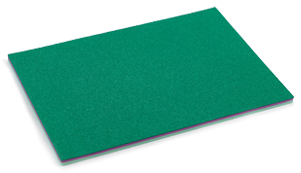Nov . 06, 2024 09:48 Back to list
Choosing the Right Flooring for Your Commercial Gym Space and Performance Needs
Choosing the Right Flooring for Commercial Gyms A Comprehensive Guide
When it comes to setting up a commercial gym, one of the most critical components to consider is the flooring. The right gym flooring not only enhances the aesthetic appeal of the space but also significantly influences safety, functionality, and the overall user experience. This article explores the various types of flooring available for commercial gyms and offers insights into how to choose the best option to meet your needs.
1. Importance of Gym Flooring
Gym flooring serves multiple crucial functions. First and foremost, it provides a safe surface for patrons engaging in various exercises, reducing the risk of slips and falls. Additionally, the flooring helps absorb shock from high-impact activities, protecting both the equipment and the users’ joints. Choosing appropriate flooring can also minimize noise, creating a more pleasant environment for everyone in the facility.
2. Types of Flooring Options
There are several popular types of flooring commonly used in commercial gyms, each with its own set of advantages and disadvantages
.- Rubber Flooring One of the most popular choices for gym flooring is rubber. It is durable, easy to clean, and offers excellent shock absorption. Rubber flooring is resistant to moisture and is available in tiles or rolls. Moreover, it reduces noise levels, making it ideal for weightlifting areas.
- Foam Flooring Foam tiles are another option, mainly used in areas designated for group classes or children’s fitness zones. They provide excellent cushioning and comfort but may not hold up as well under heavy weights or equipment.
- Vinyl Flooring Vinyl is a versatile option, offering a sleek look while being highly durable. It is water-resistant, making it suitable for areas that may be exposed to moisture. However, it should be noted that while it’s good for many activities, it does not provide the same level of shock absorption as rubber.
commercial gym flooring

- Carpet Though less common in modern gym designs, carpet tiles can be found in areas designed for yoga or Pilates. Carpet provides a softer surface and adds warmth to the environment but can be harder to maintain, especially against spills and sweat.
3. Factors to Consider When Choosing Flooring
When selecting flooring for your commercial gym, several factors need to be evaluated
- Type of Activities Consider the primary exercises performed in your gym. Heavy weightlifting areas require more durable surfaces, such as rubber, while spaces for group classes may benefit from cushioned foam.
- Maintenance The ease of maintenance should also be a factor. Rubber and vinyl are typically easier to clean than carpet, which can absorb odors and stains.
- Cost Budget constraints will affect your choice of flooring. While high-quality flooring can be more expensive initially, investing in durable materials may save money in the long run by reducing replacement costs.
- Aesthetics The appearance of the flooring should complement the overall gym design. Consider colors and patterns that align with your brand image and appeal to your target clientele.
Conclusion
Choosing the right flooring for your commercial gym is a crucial decision that can affect functionality, safety, and overall customer satisfaction. By assessing the nature of the activities being performed, considering maintenance requirements, evaluating costs, and ensuring aesthetic appeal, you can select a flooring solution that truly enhances the gym experience. Whether you opt for rubber, foam, vinyl, or carpet, prioritizing quality and suitability will help create an environment that promotes health, safety, and fitness for all your gym members.
-
Premium Basketball Board Stand with GPT-4-Turbo AI
NewsJul.31,2025
-
Premium Maple Flooring for Gyms & Homes | PVC & Vinyl Options
NewsJul.30,2025
-
Premium Outdoor Basketball Court Tiles for All Weather Use
NewsJul.30,2025
-
Durable Basketball Board Stand for Indoor & Outdoor Use
NewsJul.29,2025
-
Durable Pickleball Court Tiles for Outdoor Sport Courts
NewsJul.29,2025
-
Premium PVC Vinyl Flooring for Homes & Gyms – Eco & WPC Options
NewsJul.29,2025

